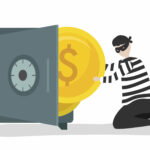Blockchain is revolutionizing how businesses operate. By replacing traditional record-keeping systems with an immutable ledger, it enables companies to save both time and money while improving security and transparency for organizations.
Blockchain is a distributed ledger containing ever-expanding lists of records called blocks, each one containing cryptographic hash of the previous block and transaction information. Because each record in a blockchain contains this hash, changing one record invariably affects subsequent records as well.
It is a decentralized database
Blockchain is a distributed database that enables anyone to store and verify information. While its main use case lies within cryptocurrency trading, this database has numerous other uses as well, including tracking finances or recording legal contracts or inventory records.
Blockchain systems are decentralized systems, making them difficult for hackers and tamperers to hack or manipulate. Furthermore, their transparency means every user can view all data entered into it – this makes blockchain one of the most robust and fault-tolerant databases on Earth.
Blockchains offer many advantages that traditional systems cannot, including instantaneous fund transfers and reduced costs by eliminating intermediaries and central points of control. Furthermore, this technology increases trust and transparency within recordkeeping; though it must be noted that blockchains cannot always be trusted; malicious actors could potentially manipulate them through code manipulation.
To prevent any attempted manipulation of the chain, each block contains a cryptographic proof of work stored as a hash; any change to this data would alter subsequent blocks and trigger network rejection of that new block.
Another method to protect a blockchain is through scale. If enough computers in a network agree on a state change, their databases will record it and ensure that information contained within a blockchain remains accurate and up-to-date.
Blockchains offer more secure storage at lower costs than centralized databases, while also being faster and cheaper to maintain. Blockchains also show resistance against hacking attacks while being more resilient against failure and capable of handling more information than their traditional counterparts.
Blockchains are the future of business systems, offering increased security and efficiency while eliminating intermediaries or central authorities from transactions and providing greater flexibility and freedom for users.
It is a distributed ledger
Blockchain differs from traditional ledgers in that it does not belong to any single party; rather, it consists of a network of computers that synchronize transaction data automatically, making it faster and more accurate while eliminating central authority fees allowing users to exchange information without delay or costs – ideal for providing vital business data.
Blockchain technology is becoming more and more widespread across industries, including health care. It has the power to streamline existing processes – like registering medical records – while simultaneously improving security by lowering risks such as tampering, theft or data loss.
Blockchain can improve transparency and trust in business transactions, as its immutable records provide evidence that a series of events is legitimate. Furthermore, its capabilities include tracking and transferring assets such as cars or money – as well as intangible ones like intellectual property patents copyrights branding.
Distributed ledgers resemble traditional paper-based systems in several respects; however, with several key differences. Distributed ledgers use cryptography and consensus to allow participants to verify the integrity of the database; additionally they’re highly fault tolerant – should one node go offline, other members continue working together uninterrupted.
Blockchains come in two varieties – public and private. Public networks are open to anyone wishing to join, while private ones require specific permission from members and can offer various levels of encryption.
Distributed ledgers provide many advantages: they are shared across a network of computers and are highly transparent. You can use one to track orders, payments, accounts and production. In doing so, all parties have an accurate understanding of what’s happening, reducing risks and inefficiency.
Prior to adopting a blockchain solution, it’s crucial that your business processes are reviewed for inefficiencies. Do you have processes that take too long, involve multiple intermediaries, or are susceptible to errors? Identifying any such processes will allow you to select an ideal blockchain application suited to your needs.
It is a peer-to-peer network
Blockchain is a peer-to-peer network designed to track transactions and assets securely. Its distributed ledger enables multiple participants to validate the information at once and ensures it cannot be altered retroactively without consensus from all network members. Each record, known as a block, contains its own cryptographic hash as well as timestamp for verification before joining with others to form a chain of records – originally used by cryptocurrency Bitcoin, but with many potential uses in business networks as well.
Peer-to-peer (P2P) networks offer many advantages over centralized systems. P2P networks provide increased security, speed and efficiency while sharing resources more evenly among their members and helping foster collaborative environments that promote teamwork and innovation – for example USENET has enabled users to communicate without depending on central servers for file sharing and storage needs.
Blockchain technology can dramatically lower transaction costs and streamline business processes in various industries, from eliminating intermediaries to speeding up dispute resolution processes. Furthermore, it helps prevent fraud while freeing up capital – helping companies meet regulatory compliance objectives along the way.
To get started with blockchain, the first step should be identifying an ideal use case that suits your business needs and finding a service partner to assist with deployment of your first blockchain project. Ideally, small pilot trials of blockchain should be run so as to gain experience and demonstrate its value.
To comprehend how blockchain works, consider its similarities to a traditional transaction system. Both systems record the movement of an asset from one location to the other; however, blockchain stands out by being more secure and cost-efficient due to its immutability; its decentralized structure protects from cyberattacks while offering greater resistance than its centralized counterparts; making it one of the most dependable forms of transaction technology currently available that can also reduce time and costs related to disputes settlement, claims processing or contract signing.
It is a digital asset
Digital assets refers to any data that exists solely digitally and comes with specific usage rights, such as photos or videos stored on smartphones, music files or film clips, word documents or presentations created in Microsoft Office 365 and more. They can even be backed by cryptocurrency and non-fungible tokens (NFTs). Finally, these assets can be traded over blockchain networks that provide immutability and transparency between members.
Digital assets are beneficial to business because they provide immediate, transparent information that strengthens trust across a network of business relationships. Digital assets allow owners to track orders, payments, accounts and production while creating one view of truth which reduces risk while opening up new efficiencies and opportunities for the enterprise.
Blockchain refers to a distributed ledger used for recording transactions and tracking assets within business networks. It uses cryptography to verify and record transactions while its security features prevent tampering or fraud from taking place. Furthermore, its scaleable nature enables multiple participants to join networks without the need for central servers or infrastructure.
Blockchain networks are not limited to just cryptocurrency storage or trading – they can also be applied to any business transaction, including legal documents, contracts and property records. Real estate professionals find the technology particularly helpful as it reduces paper processes while speeding settlement times; also helping protect sensitive information whilst decreasing storage and updating costs.
Blockchain has also been employed to combat cyber attacks and protect private data from hackers, as well as build trust among businesses, enhance government investments, reduce money laundering and influence peddling, build central registries for companies with their beneficial owners and reduce money laundering/influence peddling; however this would require buy-in from politicians, lawyers, banks and big business – so isn’t yet widely available across countries.



